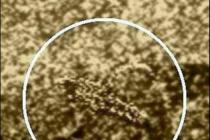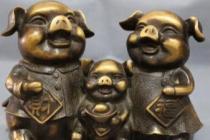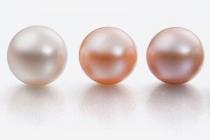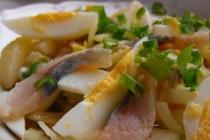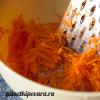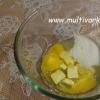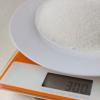Tie Guan Yin tea (also spelled Tiguanyin, Tie Guanyin and the abbreviations TGI or TG) is a low-fermentation oolong tea grown and prepared in Anxi County in the southern Chinese province of Fujian. In Russia, this is perhaps one of the most popular varieties of Chinese tea. Its history goes back several centuries. Tie Guan Yin was cultivated by monks back in the 7th–9th centuries, during the Tang Dynasty.

Tie Guan Yin tea is a whole palette of different oolongs that have a common origin. In a rough comparison, there is an undeniable similarity between them in taste and aroma, as well as in appearance. But a discerning connoisseur will easily spot the difference.
When dry, Tie Guan Yin oolong looks like many green spherical lumps. The color and size of the balls may vary depending on the variety of Tie Guan Yin. They can be smaller or larger, pale green or expressively bright. These are specially twisted tea leaves that, when brewed, open up and, swelling, increase in volume.
Dry tea has a pronounced floral-herbal aroma, somewhat reminiscent of lilac. When brewing, the aroma is revealed in full force.

Chinese tea Tie Guan Yin gives a rich infusion of yellowish-green color with a bluish tint. It becomes darker as it brews, but as the leaf's strength wears off, the infusion will begin to lose color.
The taste of oolong is unique; you feel floral freshness with light sweet notes. And then the tea will give you a long aftertaste of honey sweetness.
The name of oolong is translated into Russian in different ways: “Iron Buddha”, “Iron Goddess Oolong”, “Iron Bodhisattva Tea”. A more accurate translation would be “Iron Goddess of Mercy.”
Legend of origin
Like any famous tea, Tie Guan Yin has its own legend of origin.
Once upon a time, in the heart of Fujian's Anxi County, there was an abandoned temple in which stood an iron statue of Guanyin, the Goddess of Mercy. Not far from the temple lived a poor farmer named Wei who grew tea. Every day on the way to his field, Wei saw that the temple was dilapidating. And one day he told himself that something had to be done about it.
Unfortunately, Wei did not have the money to carry out repairs to the temple. He just took a broom and incense with him. He swept the floor clean, removed dust and cobwebs, and lit an incense stick as an offering to Guanyin. “Finally I did something,” Wei thought to himself. From that day on, he began to visit the temple regularly, cleaning it twice a month and lighting incense.
In this cave, Wei found a tea sprout. He planted it in his field, and soon a bush grew from the shoot, from the leaves of which a delicious drink was made. He distributed branches of the rare plant to all his neighbors and began selling this tea under the name Tie Guan Yin - the Iron Goddess of Mercy.
Over time, Wei and his neighbors became rich and carried out extensive renovations to the temple with the iron statue of Guanyin. Now this place has become the pride of the region. And Mr. Wei walked past the majestic building every day, feeling joy and gratitude. This is how Tie Guan Yin tea began its journey.
Production Features
The raw materials for Tie Guan Yin tea are collected only by hand 4-5 times a year. The autumn harvest is especially valued, but the winter Tie Guan Yin belongs to the lowest category of oolong, although it also has its connoisseurs.
Since Tie Guan Yin belongs to the variety of large-leaf teas, its production requires more mature leaves that have absorbed the maximum of beneficial substances. These raw materials give tea a more expressive taste and aroma.

Tie Guan Yin tea plantation in Anxi County, China
TGI tea production includes the following steps:
- Tea picking. Traditionally, farmers go out to pick tea in the morning when the dew has fallen, and only the top four freshly blossomed leaves are removed from each bush.
- Withering. At this stage, the collected raw materials are exposed to the sun. The process continues for several hours. To obtain a homogeneous material, the raw materials are periodically stirred.
- Fermentation. For Tie Guan Yin, the fermentation process is of utmost importance. The dried leaf is placed in a thick layer in baskets and placed in the shade. But every hour the leaves need to be kneaded and mixed, but at the same time maintain its shape. With this treatment, fermentation affects the edges of the leaves, but the core remains green. The longer the process takes, the more fermented the tea is.
- Interruption of fermentation. Achieved by calcining raw materials at a temperature of 250–300 degrees for several minutes.
- Twisting. In earlier times, manual labor was used at this stage. Now people have been replaced by machines. Using a special vice, the bag of tea raw materials is compressed and twisted. As a result, the oolong leaf turns into spherical lumps, which better preserve the freshness of the tea leaf.
- Final drying. The purpose of this stage is to finally fix the shape of the tea and remove residual moisture.
- Sorting. At this stage, the finished oolong is cleared of leaf roots and the tea mass is homogeneous.
- Packing. To preserve the unique aroma of Tie Guan Yin, it is packaged in vacuum foil packaging. These bags can contain 50, 100 or 250 grams of oolong. But packaging in small bags of 8 grams is considered more correct. Very often, sellers offer an iron can containing 30 TGI vacuum bags with a total weight of 240 grams.
Types and varieties of Tie Guan Yin
Many varieties and varieties of tea are sold in China under the Tie Guan Yin brand. When purchasing tea in online stores, you should read the description more carefully. A self-respecting seller will definitely clarify what variety of the famous oolong we are talking about:
- The highest quality TGI is called Tie Guan Yin Wang. This is the Lord tea, the king tea, the highest quality among its brothers.
- Tie Guan Yin Mao Cha is rough, not fully sorted tea. It goes on sale together with leaf cuttings, but is rich in essential oils.
- Lao Tieguanyin is the so-called “aged” tea. The cooking methods are somewhat similar to pu-erh. It is fermented more strongly, and after it is ready, it is kept under certain conditions for three years.
- Tie Guan Yin Nong Xiang is a highly fermented oolong with brown leaf edges. It gives a very strong infusion and is considered a men's tea. To make it, autumn leaves are collected.
- Tie Guan Yin Qing Xiang is the opposite of the previous variety, women's tea. The leaf is slightly fermented, so it retains its original green color. The tea has a very mild taste and is harvested in the spring.

Spring harvest tea
There are also TGI varieties that take their name from the place where they grow.
Anxi Tie Guan Yin is grown in Anxi County. It can be called classic Tie Guan Yin. Anxi is made up of 13 towns and 11 townships, and each region produces its own oolong.
Let's name just two more famous varieties:
- Xiping Tie Guan Yin grows in Xiping Township. The mother bushes have been preserved here, and tea is made using secret ancient technology. Oolong from Xiping is darker, with a thicker, buttery flavor.
- Chengxiang Tie Guan Yin is from Chengxiang village. Here the oolong is lightly roasted and smoked over charcoal. It is called black Tie Guan Yin or Tie Guan Yin Black Dragon.
Beneficial features
Tie Guan Yin will not only bring joy to your perception with its delicate aroma, unsurpassed taste and invigorating effect, but will also have a positive effect on your well-being due to its beneficial properties.
Oolong Te Guan Yin has a complex effect on the human body:
- Its psychological effect is universal. It all depends on the number of cups drunk and the time of tea drinking. A small evening dose of oolong tea will help you relax and calm your mind. Tea drunk in the morning, on the contrary, will invigorate and give additional strength.
- Among the properties of Tie Guan Yin tea, noteworthy is the ability to cleanse blood vessels of fatty plaques. And since tea has the property of breaking down fats, it helps to lose excess weight and rejuvenates the body.
- Consuming oolong tea has a positive effect on blood pressure, bringing it back to normal.
- Scientists say that tea contains a powerful antioxidant, epigallocatechin gallate, which inhibits the growth of cancer cells.
- Oolong tea is also beneficial for maintaining healthy teeth and gums.
How to brew Tie Guan Yin correctly
High quality Tie Guan Yin does not like boiling water. To brew it, it is recommended to use water at 85–90 degrees. A thermometer is completely optional. It is enough to turn off the boiling kettle and wait 5–7 minutes.

During the brewing process, Tie Guan Yin expands greatly in volume, so it is better to use less tea leaves than when preparing other types of tea.
- It is better to brew Tie Guan Yin in a porcelain gaiwan. It should first be heated by dousing it with boiling water. For 200 ml volume, 3–7 grams of oolong is enough. Some recommend 8–12 grams, but this is clearly too much. The brew will be too strong.
- The first time dry tea is poured with hot water in order to wash away dust from it and allow it to “wake up”.
- The water is immediately drained, and the refreshed tea is allowed to breathe.
- The second brew, left for 30–60 seconds, is already ready to drink. If you drink from small bowls no more than 60 ml, then it is appropriate to use chakhai - the Cup of Justice, so that the infusion in each bowl is the same strength.
- It is recommended to brew Tie Guan Yin tea correctly by increasing the time of each brewing by 30 seconds. High quality oolong tea can produce an aromatic, delicious infusion up to 9 times.
One important note that applies to all quality teas, and Tie Guan Yin oolong in particular. To truly appreciate the taste and aroma, you need to drink tea not during meals or after meals. Tea drinking should be given a special time.
Does it “insert” Puer tea? The effect of Puer tea, Tie Guan Yin, Da Hong Pao
Recently, the topic of the impact of Chinese tea on consciousness has become a hot topic among young people. There are many different opinions on this matter, but the general trend promoted in society is this: a certain type of Chinese tea (Puer, Tie Guan Yin, Da Hong Pao) “inserts”, “rushing”, “pins”, “relaxes”,“causes intoxication”, in general, has a pronounced narcotic effect.
How true and true is this? Are these rumors or is there some truth to this? We decided to thoroughly understand this issue, this is what our article is about, let’s sort it out in order.
Let's take the song as a basis "Tea Drunkard" popular rappers Basta and Gufa...
It's not drugs, he's not high,
Well, yes, but tea is different
There are dangerous varieties
I made the top three for some reason
And I decided to draw some parallels...
3rd place: Puer
First of all, pu-erh has a pronounced tonic effect. This effect can be compared to a mild narcotic, but it is still tea, so in moderation it has a beneficial effect on the entire body.
Pu-erh has a direct effect on the body. If you describe the effect of pu-erh in one word, then you can say that it makes you: "turned on", "excited", "excited". Pu-erh is very good to use before sports training, before exams, and for drivers during a long journey. The effect of real high-quality Pu-erh tea cannot be confused with any other.
The main effects of good and high-quality pu-erh tea:
- Tones, invigorates, reduces drowsiness,
- Clarifies consciousness, makes the mind clear,
- Calms the spirit, helps to pull yourself together, concentrate,
- Improves digestion and metabolism in the body,
- Sobers up, makes the eye sharp and clear,
- Possessing many medicinal properties, it is one of the most medicinal teas in the world.
How to brew pu-erh:
When brewing pu-erh, the water used is of great importance; it is better if it is spring or soft, purified. Shu (black) pu-erh should be brewed with boiling water at 95-100 °C, you can even boil it a little. Young Shen (green) pu-erh should be brewed at a temperature of 80-90 °C. The first infusion needs to be drained, then the tea is infused for about 3 minutes.
The effect of pu-erh also depends on the infusion time. The longer the tea is infused, the stronger its tonic properties. You can brew pu-erh in a thermos and drink it for several hours. It will perfectly retain the temperature and all its properties.
Pu-erh taste:
Shu (black) pu-erh has a specific earthy flavor, may have hints of prunes, or combine fruit or nutty notes. Shen (green) pu-erh is more tart in taste and more reminiscent.
High-quality Pu-erh should have no bitterness (or it should disappear quickly); it should pass easily and softly through the throat, warming and soothing. The longer pu-erh is stored, the softer its taste becomes. Starting from 3 years of aging, Pu-erh becomes ready for consumption.
Aftertaste:
Depending on the variety, the aftertaste of pu-erh is sweetish, full, pleasant and quite long.
2nd place: Tie Guan Yin
Real high-quality Tie Guan Yin calms and pacifies, leading the soul and body to harmony. Tie Guan Yin is a turquoise tea and has an exceptionally bright and multifaceted floral aroma and taste.
Physical sensations are enhanced by organoleptics (a method for determining product quality indicators based on an analysis of the perceptions of the senses - vision, smell, hearing, touch, taste). Therefore, you can enter into a kind of euphoria from the harmonious perception of this tea. These are not just words - if brewed correctly, you can really feel it quite quickly.
Tie Guan Yin has a beneficial effect on a person’s overall well-being. This tea lifts your spirits, gives vitality and energy, and helps creative people find inspiration. Ideal for communicating with friends, it makes the conversation pleasant and sincere, tunes into a common wave and brings people closer together.
Ideally, you should brew it using the Gongfu Cha (Higher Mastery of Tea) method, which is exactly how oolongs should be brewed. Can be brewed in the usual way: at a temperature of 80-90 °C. The water should be spring or soft, purified. The first infusion needs to be drained, then the tea is infused for about 2 minutes, the number of brews is up to 5-7 times. Tie Guan Yin should not be infused for a long time, as it may lose its taste and properties.
Tie Guan Yin is ideal for communication. If you invite several close friends for a couple of pots of Tie Guan Yin tea, the conversation will flow easily, sincerely, openly and naturally. This tea is able to create a special atmosphere in which all tea party participants are immersed.
The apotheosis of tea drinking can be a certain euphoria that will be felt by all participants in the tea ceremony. For the best effect, tea drinking should be done in a room isolated from extraneous noise, with dim lights and light, pleasant music.
Taste of Tie Guan Yin tea:
Rich, slightly sweet, honeyed, with pronounced floral notes. The taste of Tie Guan Yin tea can vary from cup to cup, from tart and rich to light and subtle.
Aftertaste:
Fresh, bright, unusually long lasting with floral undertones.
1st place: Da Hong Pao
So, the first line of my hit paradeI boldly give to the big red robe
What I like is Da Hong Pao
The tea drinker is here!
In the production of Da Hong Pao tea, fermentation is longer than that of Tie Guan Yin tea, so its taste can be described as full, rich, honeyed. Its effect is similar to Tie Guan Yin tea, but lasts a little longer.
Da Hong Pao has a relaxing effect; it will warm you from the inside and allow you to feel the comfort of your surroundings. Tea perfectly improves your mood, promotes harmonious communication in the company of friends, and puts you on the same wavelength.
Da Hong Pao gives a very interesting state and allows you to feel exactly the “tea intoxication”, which is unlike anything else. The Big Red Robe makes the mind clear and sober, relieves emotional stress, and allows you to feel pleasant spreading sensations throughout the body.
One of the most famous varieties of tea in China is Tie Guan Yin. In the Celestial Empire, it is customary to treat guests to a delicious drink and serve it in a restaurant. Also, according to customs, delicious tea is used to wash a successfully concluded deal or wash away all the negativity and fatigue after a hard day.
The taste and aroma of Tie Guan Yin tea will be remembered from the first sip. A cup of the drink will give you unforgettable emotions, thanks to its unusual taste properties and unique smell.
In our article we will talk about the features of the production of Chinese Tieguanyin tea, the legend of its origin, the reader will learn about the beneficial properties of tea, its varieties and types, as well as how to brew the drink correctly, and contraindications for use.
What is Tieguanyin tea
It is customary to drink Tieguanyin tea in its pure form, without adding sugar, honey, or snacks. This drink is used as an aperitif and served before or between main courses.
In China, Tie Guan Yin tea is presented as an expensive, valuable gift. Such a luxurious souvenir is usually given at the state level. The drink should be enjoyed in its pure form, without drinking sweet desserts.
Even the most sophisticated gourmet will not be able to convey in words the delicious taste of tea. With each subsequent brew, the drink reveals new flavor and aromatic notes. Tea is always different and unique. Its shade can vary from soft greenish to rich yellow.
In the tea aroma you can catch the smell of lilac and deciduous forest, wildflowers. A drink brewed according to all the rules of the tea ceremony gives strength and vigor, leaving a pleasant aftertaste in the mouth.
True connoisseurs of Tie Guan Yin tea admire the drink because it can quickly relieve fatigue. You can enjoy tea alone or treat your friends to a fragrant drink. It invites you to have a heartfelt, sincere conversation.

Origin story, legend.
There are several interesting and mysterious ancient legends about the origin of tea.
The Legend of a Tea Grower named Wei Qin
The story tells us about a tea grower who brewed tea for the goddess Guan Yin twice a day. She drank three mugs of the green aromatic drink for more than 10 years. One day, the tea grower had an unusual dream sent by the goddess. It contained a mysterious tree growing on a mountain. In the morning, waking up from sleep, Wei Qin decided to climb the mountain cliff where the beautiful tree grew. It had a charming, fabulous aroma. The man tore a cutting from a tree to plant it in an iron pan. Several years passed and the tree grew. The tea grower picked the leaves from it and brewed them for his friends. Everyone was delighted with the taste of the tea. The school teacher especially liked it, who asked what the name of this drink was. Wei Qin told about his dream, but he didn’t come up with a name for the tea. Then the teacher advised to name it in honor of the goddess who sent the dream and the iron pan in which the tea was grown. The tea received the name of the Iron Goddess of Mercy or the already familiar name Tie Guan Yin.
Legend Van
In a small town called Xiping, the ancient Chinese scientist Wang found an unusual unfamiliar plant, which was located under the Guan Yin Mountain. He dug up the plant and brought it home to grow and study. The scientist came up with a brilliant idea - to brew the leaves of the plant. The prepared tea delighted me with its taste and delicate aroma. When Emperor Qianlong came to the city for a visit, scholar Wang decided to treat him to an amazing drink. The emperor appreciated the taste of the tea and asked to tell the story of its origin. And then he advised him to give it a name in honor of the mountain near which the tea was found. Wang did just that, calling the tea Tie Guan Yin.

Production Features
The Chinese call Tie Guan Yin tea turquoise. Indeed, the tea leaves have a delicate blue-green tint. This color is achieved due to incomplete fermentation during the production process.
Inimitable loose leaf tea is produced only in Anxi province, located in the south of Fujian. The finished product is expensive. The reason is the duration and rarity of the technological process. Tea can be brewed up to 13 times. With each brew, you can discover new facets of color, delicious taste and exquisite aroma.
Tea leaves are harvested 4 times a year. It is not the young leaves that are considered especially valuable, as is customary, but the juicy, developed, long foliage collected in the spring.
There are several main stages in the production of Tie Guan Yin tea:
- After the tea leaves have been collected, they are aired and then dried in the sun;
- Laying raw materials, calcination under high temperatures;
- Using special equipment, the leaves are rolled and then dried;
- The finished raw materials are dried over low heat and then sifted;
- The finished product is packaged and sold to consumers.
The brew acquires the required density and becomes hard. The leaves are perfectly rolled and ready to eat. Tea is stored in refrigerators so that it retains its beneficial properties, aroma and taste for a long time. But it is not recommended to keep it in the cold for a long time; the tea will simply grow old and cease to be unique and inimitable.

Effect and beneficial properties of tea
Ti Guan Yin tea is a real treasure trove of vitamins and minerals that are beneficial and essential for health. It includes:
- Vitamins B and C, as well as P, E, vitamins of the PP group.
- Iron;
- Manganese;
- Selenium;
- Phosphorus.
The drink has a considerable number of beneficial properties:
- Improving skin color, smoothing wrinkles;
- Removes toxins, cleanses the body of fats and toxins;
- Strengthening teeth and gums;
- Promotes weight loss;
- Normalizes blood pressure.
It is worth noting that tea has a tonic and rejuvenating effect, the drink breaks down fats and has a calming effect.
Curious!
It is noted that Ti Guan Yin tea was used by monks due to its unusual effect. The drink helped to enter a trance state.
Tea can cause euphoria, this occurs due to a combination of tonic and relaxing properties. But there are no drugs in the drink; it has an exceptional effect on the body, which is why it is so valuable.
Varieties and varieties
Tie Guan Yin tea has several varieties. Tea leaves are divided into types depending on where they grow.
1. Anxi. Tea is grown in Fujian province in the city of Anxi. The finished drink has a rich, bright color and is very aromatic. Leaves are collected in autumn and spring;
2. Chengxiang. Tea is grown in Anxi County, Chengxiang Province. In order to create the finished product, the tea is first smoked and then lightly fried over coals;
3. Siping. This variety of tea grows in the village of Siping. The production technology is secret; it has been used since ancient times. The color of the drink is dark, and the taste is slightly bitter and viscous. Only true tea gourmets who understand its original taste and aroma can appreciate the benefits of tea.
Anxi County consists of 13 villages, and also includes 11 townships. Each of them has developed its own unique tea production technologies. That is why each finished drink has its own unique aroma and unique taste.

Ti Guan Yin tea is also divided into varieties. This graduation will depend on the method of drying the leaves.
- Variety Van. This is tea of the highest category. Translated into Russian, it means ruler;
- Variety Mao Cha. When harvesting, not only leaves, but also cuttings are plucked from the bushes. This allows you to preserve essential oils in the leaves and increase the shelf life of the finished product;
- Variety Lao. After the leaves are fermented, they are poured into bags and aged for 2-5 years. Tea is located in special rooms. The leaves fade a little, but the color and taste of the drink becomes much richer, and the aroma is brighter and more fragrant;
- Variety Nong Xiang. This is an autumn harvest tea. When brewed, the drink acquires an oily, deep taste, a rich, incredibly aromatic smell;
- Variety Qing Xiang. The tea has a fresh floral aroma and a mild taste because the leaves are harvested in spring or summer.
These are the main varieties of Ti Guan Yin tea. They are the most popular due to their inimitable taste, original color and aroma.

How to brew correctly
If you want Ti Guan Yin tea to preserve all its vitamins and minerals while brewing Ti Guan Yin tea, and to give the drink an exceptional aroma and unforgettable taste, be sure to follow the specifics of its preparation.
- Before preparing tea, be sure to pour boiling water over the teapot;
- Place a few spoons of Ti Guan Yin tea into the container. For one cup, a spoonful of tea leaves.
- Fill the teapot with hot water 1/3 full. The water should have a temperature of 80-90 degrees, but not boiling water;
- Cover the teapot with a lid. The brew is infused for 5-7 minutes;
- Then add water. The drink is ready.
If the tea has been prepared according to all the rules, it will acquire a rich olive-yellow hue. It is recommended to drink the drink after meals. I often drink tea in the evening or before bed. Don’t forget that you can cook it from one brew several times. In this case, the subsequent brew will differ in taste and smell from the previous one.
Advice!
Tea must be filled with clean water only. Chlorinated water can ruin the taste and smell of the drink.
Tea prepared in clay or porcelain containers is especially tasty.
Harm and contraindications
Despite the fact that tea has many beneficial properties, drinking too much of it is not recommended, especially for people with high blood pressure. The drink is also contraindicated for those who cannot fall asleep for a long time. The brew contains a lot of caffeine, which invigorates. Therefore, tea should be consumed with caution. If after drinking a drink a person feels unwell, it is better to refuse to drink it.
It is necessary to drink Tie Guan Yin tea correctly. During the tea ceremony, you need to be in silence or turn on soft, relaxing music; the lights can be dimmed. The drink is perfect for drinking not only alone, but also in the company of loved ones and friends. Tea can set you up for a relaxed, frank conversation. Drink the finished drink slowly, slowly, in small sips. This will allow you to enjoy its aroma, delicate taste, and feel the bright aftertaste. You shouldn’t add lemon or sugar to your tea, it’s delicious as it is.
The history of Chinese tea “Tie Guan Yin” began from the time when a poor tea grower Wei Yin from Anxi County saw in a dream a special tree with a charming aroma emanating from it. The voice of the Bodhisattva (goddess) Guan Yin told the peasant that he needed to take a shoot from it and plant it in the ground. In the morning, Wei Yin immediately went to look for the dreamed tree and did everything as the deity ordered. A few years later, an ordinary tea bush grew from the shoot. But when a peasant prepared a traditional Chinese drink from its leaves, the taste of the tea exceeded all his expectations.
Tea "Tie Guan Yin": general description
Today, Tie Guan Yin is a semi-fermented loose-leaf tea, which in China is classified as blue-green or turquoise. This is the most famous and expensive oolong, which is grown in the south of Fujian, in Anxi County. It is known that tea has been produced in this area for a very long time, since the 7th century.
The fermentation process determines the color and taste of the drink. Tie Guan Yin is a cross between green and red (black) tea. The peculiarity of the semi-fermented drink is that the rolled leaf is dried only on top, but remains fresh inside. In addition, more mature leaves are used to obtain it than for green tea. At the same time, unfinished fermentation makes it possible to preserve all important vitamins and other beneficial substances and determines the unique taste and aroma.
Collection time
The taste and medicinal properties of tea collected at different times of the year are very different. This largely determines the price of it.
The most aromatic and delicious tea is considered to be “Tie Guan Yin”, collected in the fall, from mid-September to the end of October. During this time, it is possible to pick about 15 percent of the annual volume of mature green leaves. The drink made from them (after mandatory fermentation) is considered the best and, accordingly, expensive.

The spring harvest, which occurs from the twentieth of April to mid-May, accounts for almost half of the annual volume, so it is easier to buy such tea and its price is not so high.
Chinese winter tea “Tie Guan Yin”, whose properties and effects on the body are less pronounced, is considered the worst, although there are also fans of this drink exclusively. It is collected annually from the end of October to the end of November.
Depending on weather conditions in summer, tea leaves may be plucked twice. The first time this happens is from mid-June to early July, the second time - from the twentieth of July to mid-August.
Green tea “Tie Guan Yin” is harvested exclusively by hand, at dawn, picking only the first four leaves. Thanks to this, it is possible to obtain the most healthy drink with an unusually rich color and aroma.
Production Features
Tea production technology is quite complex; it consists of several labor-intensive steps:
- Tea picking.
- Airing in the sun.
- Drying at low temperature.
- Preparation (fermentation) - shaking in a special drum for maximum oxidation of the leaves and the release of juice from them, followed by placing them in heaps for ventilation.
- Stop fermentation by roasting the leaves.
- Curling in special machines or manually. After this, the large leaves turn into small lumps, which straighten out again during the process of brewing tea.
- Final drying in an oven at medium temperature.
- Final sorting of leaves from cuttings.

This is how traditional tea “Tie Guan Yin” is made, the effect of which was known to the Chinese emperors. If the rules of one of the stages are not followed, a completely different type of drink results.
Varieties of Tie Guan Yin
Based on grade and taste, the following types of tea are distinguished:
- "Tie Guan Yin Wang"- “royal” tea, elite and the highest quality among other drinks. The best leaves are selected for its preparation, so it is also the healthiest.
- "Mao Cha Te Guan Yin" - is not processed completely from cuttings, but is sold along with them. It contains many essential oils that determine the taste of the future drink.
- "Lao Tie Guan Yin" - it is also called "aged" tea. It lends itself to stronger fermentation and is aged under certain conditions for three years. Thanks to this method of preparation, the taste of this tea is very different from other varieties.
- "Nong Xiang Tie Guan Yin" is a strong tea with an oily structure. It is harvested in the fall when the leaves become mature. After this, they are subjected to strong fermentation, causing the edge of the leaf to turn brown.
- "Qing Xiang Te Guan Yin" - undergoes mild fermentation, thanks to which the leaf retains its green color. This is a smooth tea with a refreshing floral aftertaste. Collection time is spring or early summer.

Despite the fact that the choice of tea varieties is so large, the most popular is still Tie Guan Yin oolong. Its properties as a medicine are so strong that the benefits of its use are difficult to overestimate.
Taste qualities
Those people who drink Tie Guan Yin tea every day can be considered real gourmets. It should be noted that a classic drink must have certain qualities.
- The color of the freshly prepared drink is light green with a turquoise tint. With each subsequent brewing, the color of the drink becomes darker.
- The aroma is floral with honey and herbal notes.
- The taste is rich, slightly sweet.
- Aftertaste - a pleasant sweetness remains in the mouth with calm notes of fresh lilac.

To experience the fullness of the taste and aroma of Tie Guan Yin, the effect of which is felt almost immediately, it is better to drink it separately from the main meal.
Nutritional value and benefits of tea
Vitamins C, D, P, PP, E, K, as well as group B are contained in large quantities in the freshly prepared drink. The beneficial properties of Tie Guan Yin tea are explained by its unique mineral composition. Elements such as potassium, phosphorus, iron, manganese, fluorine, selenium, and iodine ensure the stable functioning of all organs and systems.
The vitamin and mineral composition unique to tea not only has a general strengthening effect on the body, but also allows it to be used as an independent medicine.
"Tie Guan Yin": effect on the body
For humans, Tie Guan Yin oolong is an indispensable source of energy and a sedative at the same time. With its help you can normalize blood pressure, stop oral diseases, and strengthen the immune system. It is both an effective fat burner and a rejuvenator.

For Tie Guan Yin tea, the weight loss effect lies in its ability to remove toxins and cleanse the walls of blood vessels from cholesterol plaques. Due to this property, it is often included in various diets.
For the Tie Guan Yin drink, the rejuvenating effect is that it has a beneficial effect on the skin, making it smooth and elastic. Small wrinkles are smoothed out, and large ones are no longer as noticeable as before. This tea is also a natural antioxidant that helps the body fight dangerous cancer cells.
How to brew tea correctly?
To make Tie Guan Yin as beneficial as possible for the body, it must be brewed correctly. A certain temperature, special dishes and a favorable environment help turn a banal tea reception into an interesting ceremony.
To brew tea, purified water must be boiled and cooled to a temperature of 80-85 degrees. After this, prepare porcelain or earthenware, first pouring boiling water over it. Place rolled leaves in a teapot at the rate of 5-7 grams per 200 ml of water. Then pour boiling water over the leaves and immediately, after a second, drain the water. This is done in order to clear the tea of debris and dust and force the curled leaves to open. Next time you need to brew for about a minute. With each subsequent time, the time must be increased by 30 seconds. In total, up to 10-15 brewings of the same leaves are allowed.

This is how Tie Guan Yin tea is prepared, the medicinal properties of which are widely known far beyond China. Unlike the young light green drink, it becomes darker later, acquiring a rich yellow-brown color and rich taste.
How to buy Chinese tea? Product price
It should be noted that real “Tie Guan Yin” is produced exclusively in China. In order to preserve its unique taste and aroma, tea is packaged in vacuum bags of various sizes. The price for it is set at about 500 rubles per 50 grams and more, depending on the type of tea. Oolong "Tie Guan Yin" cannot be cheap, since it is an elite tea, which has practically no analogues.
You should not look for this tea on the shelves of regular stores and supermarkets. It can only be ordered at specialized points of sale and online stores selling tea from China. If the vacuum packaging is broken, it is better to refuse such a purchase, since they very often try to sell a fake under the guise of an expensive drink. The original "Tie Guan Yin" is sold only in vacuum packaging.
Tea "Tie Guan Yin": customer reviews
Properly brewed traditional “Tie Guan Yin” has never left anyone indifferent. Its honey taste and floral aroma with a pleasant aftertaste are especially popular among green tea fans. “Tie Guan Yin”, the effect, reviews and beneficial properties of which are only positive, is becoming increasingly popular. The only thing that puts buyers off is the price. But, having once tried expensive tea, few people will want to return to the cheap option again. How tasty and aromatic “Tie Guan Yin” is.
Tie Guan Yin (some write: Tieguanyin, Tie Guanyin) is a very popular, legendary oolong grown in Fujian Province (in Anxi County). It was harvested here back in the 17th century, during the reign of the Tang Dynasty.
The title translates as " Iron Bodhisattva of Mercy».
Tieguanyin is a semi-fermented loose leaf tea classified as oolong.
To produce this tea, mature leaves rich in caffeine and tannins are used.
Tie Guan Yin is valued for its rich aroma, reminiscent of something fruity and spicy.
It is not surprising, but Tie Guan Yin has several varieties, such as internal varieties. They differ in the time of collection of raw materials and the grade of the tea leaf itself. The price of Tieguan Yin depends on these factors.
- The most common Tieguan Yin is spring. It takes up half of the tea offered. It costs less.
- The autumn harvest is more valuable, refined, and, as a result, expensive.
Let's look at the types of this oolong in a little more detail.
Types of Tie Guan Yin
There is a division according to the place where this tea grows:
- Anxi Tieguanyin. Grown in Anxi (Fuzhan Province). Oolong is bright, rich in color and very aromatic. Collection time: autumn and spring.
- Xiping Tieguanyin. Grown in Chengxiang (Anxi County). The production of this oolong has its own distinctive features: the tea is smoked and lightly roasted over charcoal.
- Xiping Tieguanyin. It is grown in the village of Xiping, which belongs to Anxi County. The production technology is very ancient, and it is also classified. This Tieguanyin is dark in color and has a “stringy” taste.
In general, Anxi County is divided into 13 villages and 11 volosts, and everywhere they make tea in their own way, using their own unique technologies, with their own tricks.
Therefore, if you want to try all the varieties of tegauan yin, you have to make an interesting, long and exciting “journey” into the world of oolongs.
Tieguanyin is also divided according to the time of collection.
- Spring collection (April 20 – May 18)
- First summer gathering (June 15 – July 10)
- Second summer camp (July 20 – August 15)
- Autumn collection (September 20 – October 25)
- Winter harvest (October 25 – November 25)
I have only tried Tuganyin from spring and summer harvests. This concludes my acquaintance with this tea. For now. I just have my own, unusual preferences and tastes. 
Tie Guan Yin is also classified according to its taste characteristics:
- Tieguanyin Wang. It is considered tea of the highest category.
- Mao Cha Tie Guan Yin. It is tea, not fully processed, with cuttings. It is believed that more essential oils are preserved this way, and the raw materials themselves last longer. Usually these cuttings are separated before sale.

- Lao Tie Guan Yin. This tea is also produced in Taiwan (yes, I didn’t mention that at the beginning.). It is a little more fermented, and is also aged in the manner of shu pu-erh in special rooms.
- Nong Xiang Tie Guanyin. Rich aroma, oily infusion (rich in essential oils). This oolong is usually harvested in the fall.
- Qing Xiang Tie Guanyin. A softer aroma, reminiscent of some flowers. This tea is harvested in spring and early summer.

Tie Guan Yin - the legend of origin
A long time ago, there once lived in China a tea grower (a person who grows tea). And his name was Wei Ying. And he lived in Shanyao, a town in Anxi County.
Every morning and evening for 10 years, he brought tea to the Bodhisattva Guanyin (This is the name of the early Buddhist deity. Usually represented in the form of a certain girl.).
One night, after regular trips and offerings, this tea grower had a dream in which the goddess herself came to him and took him to a mountain on which grew a beautiful tree with a fantastically pleasant smell.
Waking up, Wei Yin ran to that place, climbed the mountain and saw the same tree. It turned out that it was a beautiful tea bush with an alluring aroma.
Delighted, Wei Yin named this tea in honor of the bodhisattva: “Iron Guanin.”
Well, as if this story has some kind of alternative with a continuation.
Briefly it sounds like this.
Emperor Qianlong traveled throughout China, and so he visited the south of Fujian province.
Local tea growers (who were famous throughout the Celestial Empire for their variety of oolongs) presented him with tea.
The imperial kettle was filled with boiling water. Qianlong threw a small handful of tea leaves into the water.
The tea, instead of floating on the surface of the boiling water, went down like a stone.
The emperor was very surprised, since he was sure that only one tea had such behavior - Dong Ting beat on chun, glorified by his grandfather.
The aroma of tea filled the entire room...
The Emperor inquired about the name of this wonderful tea, to which the peasants replied that this tea had no name, and indeed they had been making it for almost a hundred years using the technology of one ancestor, who received this tea as a gift from the goddess Guanyin herself.
Then the emperor decided to call this tea “iron” because it was heavy, in shape and color reminiscent of dragonfly heads or bolts on the riveting of an imperial ship.
Here's the story. 
Tie Guan Yin: effects, properties
Tieguanyin has calming and relaxing effects.
Of course, if you drink a lot of this oolong, your overall activity will increase. Cheerfulness and talkativeness will appear, the brain begins to work much faster, and all this is accompanied by a good mood, contentment with oneself and this world. All this thanks to caffeine and theanine. Of course, there are many other substances, but their overall contribution to these effects is small.
Someone drinks Tieguanyin to “get drunk”, “to get stuck”, to get some kind of hallucinations, in general, people are looking for some kind of narcotic effects, and not for pleasure from the taste and aroma of tea.
I’ll say right away, there is nothing like that. No, of course, we are all individual, and for someone drinking a cup of coffee or strong tea will act like a line of cocaine, but I think there are few such people.
All these intoxicating effects of Tieguanyin Oolong are specially maintained to ensure that it sells well. This is how a whole segment of consumers appears: experimental seekers.
As mentioned above, Tie Guan Yin can have stimulating, tonic effects, but all this is “within the framework of tea.”
Like any oolong, Tie Guan Yin is rich in vitamins, antioxidants, and minerals. All of them have a complex effect on health, and only have a positive effect.
Immunity increases, the condition of blood vessels improves, the skin becomes elastic, the youth and beauty of the body are prolonged.
The person becomes calmer and more confident. And if you live without stress, you will live longer and better.
How to brew Tieguanyin

Purified soft water is best suited for brewing. Useful utensils: porcelain or Yixing clay.
The recipe for properly brewing Tieguanyin is as follows:
- Heat the water to 85-90 degrees.
- Wash the dishes, rinse with boiling water to warm them up.
- For 200 ml. take 8-13 g of water and tea.
- The first infusion (2-3 seconds) needs to be drained.
- Fill with water again, but this time insist for about 10 seconds. Drain and drink.
- Infuse each subsequent brew for 5 seconds longer.
- After the sixth brew, the infusion time will be more than a minute.
- After 4-5-6 brews, you can already use water at a higher temperature.
A good Tieguanyin can withstand 7-9 brewings.
And here is a visual, understandable and at the same time spectacular process of brewing Tie Guan Yin.

